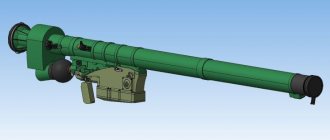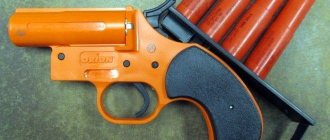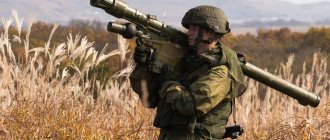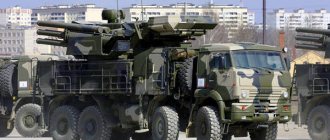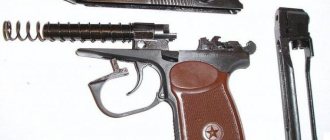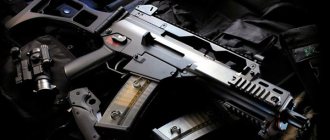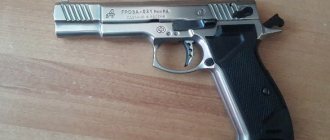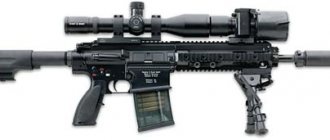Description
The operating principle of the simulator is based on the formation of a navigation field as a set of navigation signals:
— GLONASS SNS with rangefinder codes with open access ST (OF) in the frequency ranges L1, L2;
— GPS GPS with standard accuracy rangefinder code C/A in the L1 frequency range, rangefinder codes C/A or CM, CL in the L2 frequency range, rangefinder codes I5, Q5 in the L5 frequency range;
Note - IS-GPS-200E dated 06/08/2010, IS-GPS-705A dated 06/08/2010
— Galileo satellite navigation system with OS rangefinder code in the E1 frequency range, BPSK(10) rangefinder codes in the E5a, E5b frequency ranges;
Note - OS SIS ICD, Issue 1 dated 02/01/2010
— SBAS SDPS with standard accuracy rangefinder code C/A in the L1 frequency range;
Note - RTCA DO-229
- via independent (similar to SNS navigation signals) simulation channels with the possibility of distributing them in any quantitative SNS-channel ratio.
The modifications differ from each other in the number of channels and the types of signals available for simulation, shown in Table 1.
Table 1
| Parameter name | Parameter value | ||
| GSG 5 Series | GSG-62 | GSG-64 | |
| Number of channels | up to 16 | up to 32 | up to 64 |
| Available GNSS | GPS, optional GL | UNASS, GALILEO, SBAS | |
| Number of frequency ranges simulated simultaneously | 1 | 2 | 4 |
| Available frequency range | L1, E1 | L1/E1 L2/L2C 1 L5/E5 * E6* | L1/E1 L2/L2C L5/E5 E6 |
| Note - options are determined by the supply agreement | |||
Structurally, the simulator is a monoblock with a high-frequency output for the simulated signal on the front panel, an input for an external reference frequency of 10 MHz, an output of an internal reference oscillator of 10 MHz, a 1PPS output for issuing the simulator time scale, and an EXT TRIG input for supplying external control pulses on the rear panel.
The rear panel also contains Ethernet, USB, GPIB interface connectors, and the front panel contains controls.
The simulator ensures the formation of a complete navigation radio signal at the output based on the results of summing the signals of all simulation channels, each of which generates one complete navigation signal of one navigation spacecraft (NSV) in one frequency range.
The simulator has the ability to simulate the movement of one UAV in the combined navigation field of the SNS with multiple repetitions of the movement according to a pre-formed simulation scenario. Synchronization of the operation of all simulator nodes is carried out either from an internal reference oscillator or from an external source of highly stable signals with a frequency of 10 MHz. In this case, synchronization of all simulation channels occurs at the leading edge of the 1PPS pulse.
The appearance of the simulator, places of sealing against unauthorized access and application of the type approval mark are shown in Figures 1 - 2.
Carabiner GSG 5. cal. 22 LR
GSG5 carbine in caliber 22 LR, soot on the barrel after the firing line.
German legislation imposes serious restrictions and prohibitions on weapons manufacturers, which often leads to the creation of unique weapon models.
This is how the GSG-5 carbine appeared, which is a full-fledged copy of the MP5 submachine gun.
It is worth noting that the carbine parts cannot be used to assemble the MP5 due to the design features. The GSG-5 carbine is supplied to the Russian Federation with a black polymer non-folding stock.
View of the GSG5 chamber. Cartridges are used with the designation HV (high-velocity), only with such cartridges is shooting possible without delay.
The carbine can be used for sports and training shooting, it is loaded with universal .22LR caliber cartridges. Production of the GSG-5 carbine is concentrated at the Enze-Heunken plant.
View of the GSG5 shutter mirror.
Specifications
| Characteristic | Meaning |
| Weight | 2.22 kg |
| Magazine capacity | 10 rounds/24 rounds |
| Length | 67.8 cm (trunk - 19.55 cm) |
source: https://premiumgun.ru/materialy/guns_gsg/
In the photo GSG5, an additional 110-round drum magazine, a Picatinny rail, and a 22-round magazine were purchased. (magazine included, limited to 10 rounds).
A silencer is screwed onto the GSG5 barrel, which performs centering and fixing functions.
The charging handle remains stationary when firing, just like the HK MP5.
The rear sight consists of 3 diopters and a standard V-shaped slot.
View of the V-shaped slot of the GSG5 rear sight.
The shooting was carried out with three different cartridges. SK Biathlon, Okhotnik-370E (Expansive bullet) and Okhotnik 370. I have not dealt with 22 caliber before. All the cartridges were lubricated, but the hunter was especially generously lubricated. this in my opinion led to frequent delays in firing that day. Apparently, before shooting, all cartridges must be pulled through a rag to remove grease.
Expansive bullets showed fast performance. The bullet opened after passing only 50 mm of the board.
Photo of GSG 5 around its axis.
To clean the carabiner, it is necessary to perform partial disassembly. To disassemble, you need to unscrew three slotted screws and one T9 hexagon screw.
disconnect the stock, remove the forend, pull back the handle assembled with the trigger, and in conjunction with the trigger, the bolt will come out along the guides.
The photo shows the lock on the trigger.
GSG5 scheme
Software
The simulator software consists of special firmware for controlling the simulator and special workstation software (script creation software) installed on an external control computer. Special simulator control software defines the software part of the simulator, contains a set of options characterizing the technical capabilities of the simulator, is inaccessible to the user and is protected by the design of the simulator.
Identification data (signs) of a metrologically significant part of the software are given in Table 2.
table 2
Software name | Software identification name | Software version number (identification number) | Digital software identifier (checksum) | Algorithm for calculating the digital software identifier |
| Built-in BY | Firmware | version no lower than 5.5.1 | — | — |
| Scripting software | StudioView | version no lower than 3.5.0.1 | — | — |
Software protection against unintentional and intentional changes corresponds to the level
Completeness
The delivery set of the simulator is shown in Table 3. Table 3
| Name | Designation | Quantity |
| Simulator of signals from global navigation satellite systems GLONASS/GPS/GALILEO/SBAS | GSG 5-series, or GSG-62, or GSG-64 * | 1 |
| User's manual on CD | 1 | |
| Script creation software on CD | GSG StudioView | 1 |
| RF cable, 1.5 m | 1 | |
| SMA to Type N adapter | 1 | |
| USB cable | 1 | |
| Passive GNSS antenna * | Option 01/71 | 1 |
| Rack-mount kit * | Option 22/90 | 1 |
| Heavy-duty hard transport case * | Option 27H | 1 |
| User manual on paper * | OM-54 | 1 |
| Note - *delivery is determined by the supply agreement | ||
Verification
carried out according to document 651-14-11 “Instructions. Simulators of signals from global navigation satellite systems GLONASS/GPS/GALILEO/SBAS GSG 5-series, GSG-62, GSG-64. Verification methodology”, approved by the head of the GCI SI FSUE “VNIIFTRI” on July 17, 2014.
Basic means of verification:
— rubidium frequency standard FS 725 (registration No. 31222-06), limits of permissible relative frequency error ± 5 10-11;
— universal frequency meter CNT-90XL (reg. No. 41567-09), limits of permissible absolute error in measuring time intervals 0.62 ns for 100 μs
— spectrum analyzer No. 010A (registration No. 40312-08), operating frequency range from 9 kHz to
26.5 GHz, relative frequency error limits of the reference oscillator ± 1.5-10″;
— wattmeter E4418B with converters 8481A and 8481D (reg. No. 36168-07), limits of permissible relative error of power measurements ± 6% in the range from minus 70 to minus 30 dB (original 1 mW);
— receiver of signals from global navigation satellite systems geodetic multi-frequency SIGMA (registration No. 50275-12), frequency ranges of received signals GLONASS SNS (L1, L2), GPS SNS (L1, L2, L5), Galileo SNS (E1, E5ab), ShDPS SBAS (L1), limits of permissible absolute error in measuring the length of the “zero basis” in plan: ± 9 mm, ± 15 mm.
German GSG presents a new carbine GSG-Mp40
The production of sports replicas of famous models of historical firearms has been carried out for a long period of time by the company German Sport Guns (GSG). A distinctive feature of the manufactured weapons is the so-called rimfire system. The main direction of GSG's work is small-caliber weapons, which are actively distributed throughout the world, reports the website all4shooters.com.
The main reason for the prevalence of replica weapons from GSG is that the company pays special attention to the use of original methods and materials in production. Such weapons can be used for training and training of military personnel and law enforcement representatives, because it is possible to get acquainted with the characteristics and features of use even before “getting acquainted” with the main firearms models.
The German company is starting to produce a line of semi-automatic carbines in the caliber familiar to its production process - .22 Long Rifle. This line allows you to create high-quality imitations of various types of small arms that were used by the Wehrmacht in World War II. The first model in the line is the famous Sturmgewehr Mp44 - a carbine from the era of the great war. Following it, it is planned to begin producing variations of the rifle based on such a prototype as the MP40 submachine gun. The development of this rifle took place over a long period of time. It took specialists more than a year to complete this.
GSG is presenting its imitation MP40 at two exhibitions at once. One of them took place in Nuremberg, Germany (IWA & OutdoorClassics), the second - at the SHOT Show (Las Vegas, USA). Two exhibitions - and two variations of weapons. The main difference between these variations is the length of the barrel. In Nuremberg, exhibition visitors saw a carbine with a barrel length of 251 mm, which is closer to the original model of the submachine gun. But in Las Vegas, a weapon is presented that is integrated with a silencer, and this part is not removable. The total length of the weapon in this case increased to 406.4 mm (16 inches). The developers needed this move in order to bring the weapon up to the relevant American standards - all rifles and carbines that are shorter in barrel length than the designated value must be registered in the USA according to the rules for registering a short barrel. And to purchase such a weapon, you will need to obtain a special ATF license, which not all potential buyers are willing to do.
The GSG-Mp40 is a semi-automatic rimfire rifle. The carbine is loaded through a single-stack magazine, which is designed for .22 Long Rifle caliber cartridges. The maximum magazine capacity is 20 rounds.

